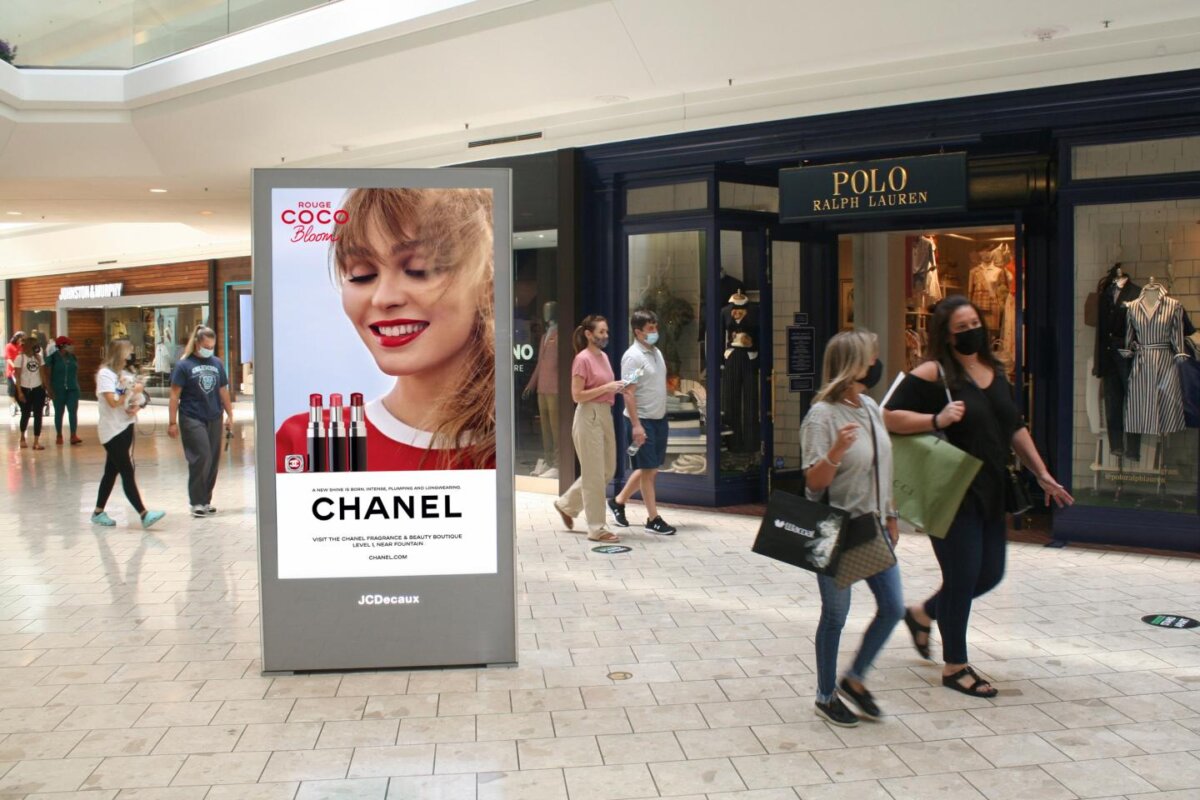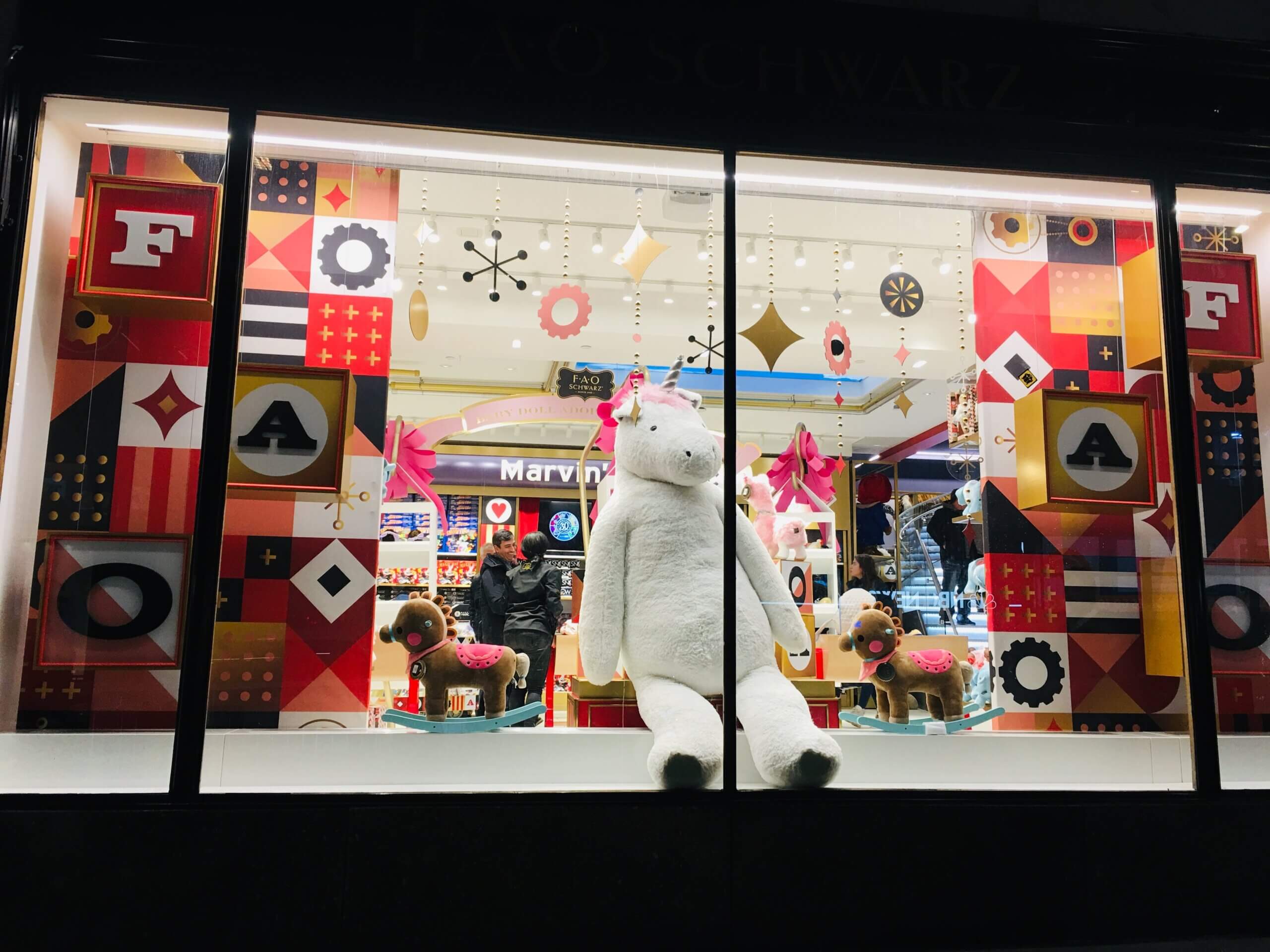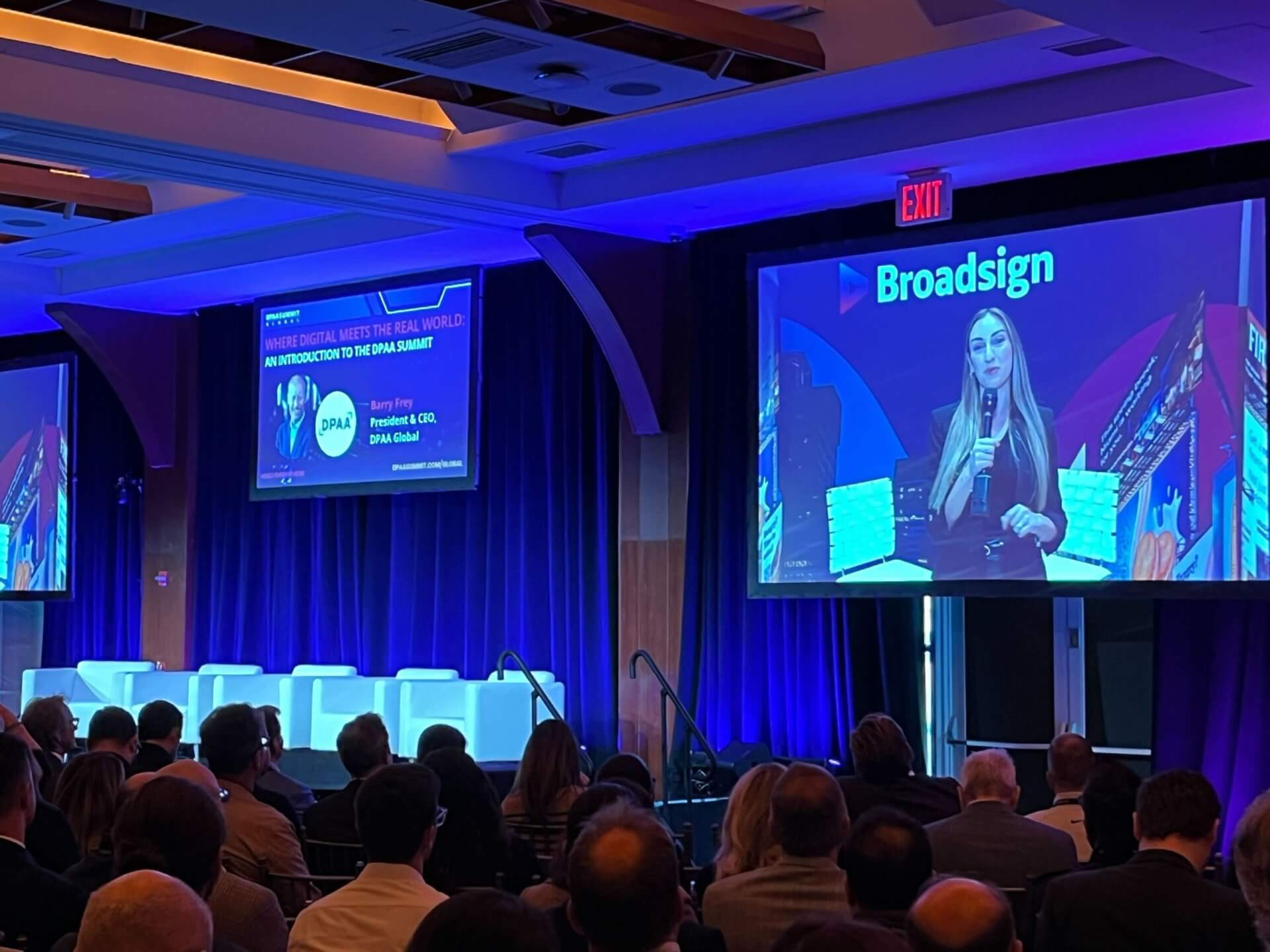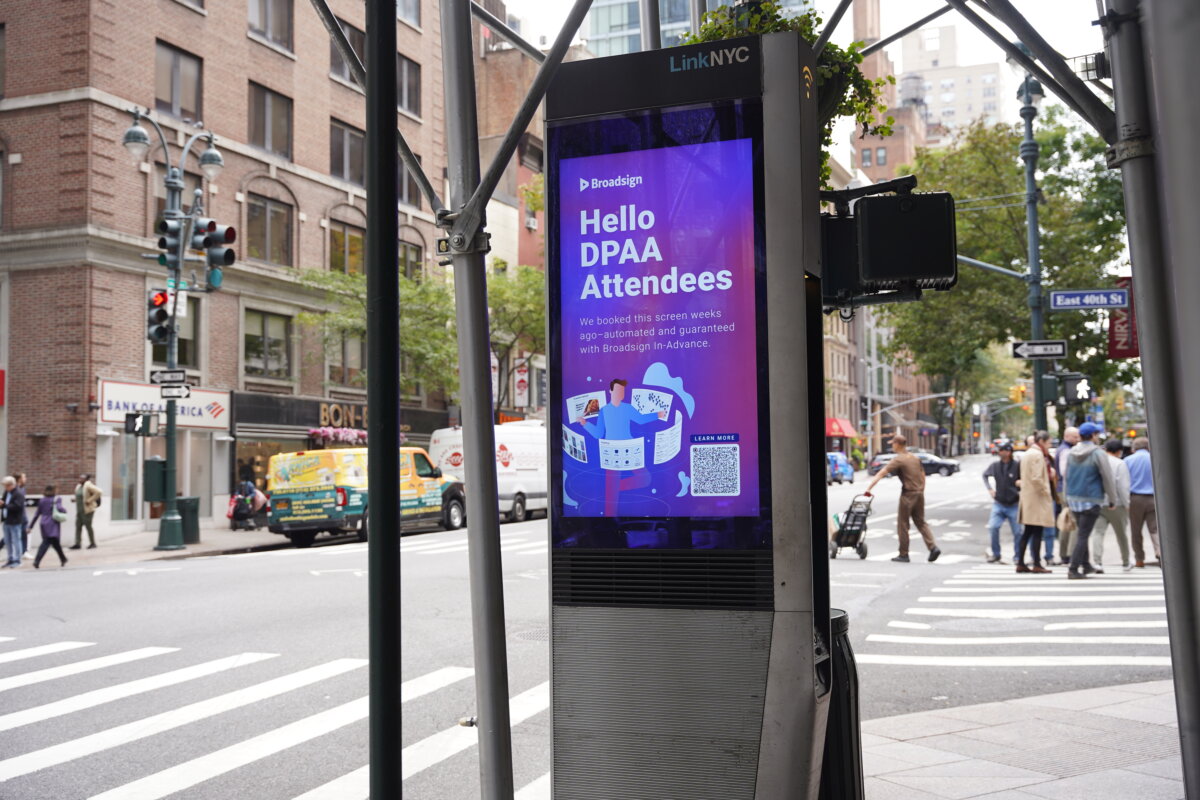| October 11, 2021
Planning your holiday retail media strategy? Here’s why you should include out-of-home advertising
We’ve entered the home stretch of the year, and for brands and advertisers, the busiest season is just beginning. Black Friday will soon kick off a wave of campaigns, deals, and opportunities to connect with shoppers—continuing through Cyber Monday, the Christmas rush, Boxing Day, and into the new year.
Like last holiday season, consumers are getting an early start. McKinsey & Company reports that 65% of U.S. adults plan to begin shopping before Black Friday. That early momentum may prove essential, as this year’s holiday calendar is tighter than usual, with Thanksgiving, Black Friday, and Cyber Monday falling later (November 27–December 1). According to PwC, 39% of total gift spending is expected to occur during that five-day window, and nearly 80% of budgets will be spent by the end of Cyber Monday, putting added pressure on shoppers and retailers alike to move quickly.
Despite ongoing economic uncertainty, from tariff concerns to shipping delays, the 2025 holiday season is still expected to see steady consumer activity. Forrester predicts that total U.S. holiday retail sales will increase 4.4% year-over-year, reaching $1.05 trillion by 2025. For advertisers and retailers, that means now is the time to fine-tune media strategies and get in front of shoppers early.
This holiday season, marketers have more ways than ever to reach shoppers on the move. Digital out-of-home (DOOH) expands the reach and relevance of omnichannel campaigns by building awareness, inspiring purchases, and driving traffic in-store and online. With the latest programmatic DOOH capabilities, launching timely, data-driven campaigns is easier than ever and helps brands stay visible during retail’s busiest time of year.
Consumer caution shapes this year’s holiday shopping
While no one can predict exactly how the 2025 holiday season will unfold, one thing is clear: consumers are approaching their purchases with more caution. According to PwC, 53% say that rising prices will likely influence their holiday spending decisions this year. That’s not to say they’ll be tucking away their wallets, though. Consumers plan to spend an average of $890.49 per person this year on holiday gifts, food, decorations, and other seasonal items, according to the National Retail Federation, only a slight decrease from last year’s amount.
What does this mean for marketers? Consumers aren’t planning to stop shopping, but with lingering worries around tariffs and higher prices, particularly for electronics, apparel, toys, food, and everyday essentials, value-driven decisions will shape how and where they spend.
Reach shoppers at key moments with DOOH
As shoppers weigh every purchase, standing out ahead of peak season is crucial. Digital out-of-home lets marketers reach consumers throughout their daily routines, whether commuting, running errands, or visiting busy retail areas, building awareness long before purchase decisions are made.
Modern DOOH campaigns can be precisely targeted and dynamically optimized, allowing brands to deliver contextually relevant messages based on real-world signals like time of day, weather, or location patterns. For example, brands can promote holiday offers near shopping centers on weekends, trigger creative for winter gear as temperatures drop, or shift campaigns between markets to match inventory and demand.
For audience-specific strategies, placement and timing matter. A brand targeting department store shoppers, primarily women in the 55-64 age range, might activate OOH ads around shopping centers and big-box stores or close to health and point-of-care facilities. Family-focused brands could target high-traffic entertainment or retail areas during weekends.
Beyond awareness, DOOH plays a key role in driving conversions. Today’s shoppers are on the hunt for value, and real-time, location-based messaging makes it easy to put the right offer in front of them at the right moment. Research from the OAAA and Morning Consult found that 42% of U.S. adults say OOH ads featuring special-offer messaging, like “buy one, get one free,” most influence their in-store spending.
With flexible creative and the ability to trigger campaigns based on live signals like weather, inventory, or store hours, DOOH ensures holiday messaging stays relevant and engaging from first impression to final purchase.

Drive foot traffic and in-store purchases
OOH continues to prove its power as a last-mile driver, bridging the gap between awareness and in-store action. U.S. in-store sales are projected to climb 3.6% year over year, reaching $780 billion, according to Forrester. Growth is being fueled by value-focused shoppers who are gravitating toward discount retailers, supercenters, and warehouse clubs in search of better deals, making physical retail more competitive than ever.
Per the OAAA, 68% of adults notice OOH ads on their way to a store, and nearly half say those ads influence their purchases. Talon Outdoor adds that 59% of shoppers are likely to buy within 30 minutes of seeing an OOH display—a clear sign of the medium’s ability to convert attention into sales.
By activating OOH along the path to purchase, brands can boost visibility and drive store traffic with timely, location-based messaging. High-traffic formats, like billboards, urban panels, and transit or street furniture near retail locations, can effectively spotlight directions or promotions. Meanwhile, longer dwell-time environments, like those in key markets, help reinforce brand messaging.

Extend the reach of omnichannel campaigns
As consumers spend more time researching before they buy, developing a strong omnichannel strategy will be key this holiday season. The hunt for value is increasingly powered by technology: Gen Z now uses social media and search engines equally (43%) to discover gift ideas, and about 15% of Gen Z and millennials expect to use AI to find inspiration. This behaviour underscores how discovery now happens everywhere, making it crucial for brands to deliver a consistent and connected experience across channels.
OOH can play a key role in that journey by bridging digital and physical touchpoints. When integrated thoughtfully, it reinforces messaging across screens and devices, keeping brands top of mind from online discovery to in-store purchase. Interactive formats, like QR codes, hashtags, or short URLs, can drive consumers to learn more, shop online, or engage with a brand’s social presence in a simple, frictionless way. For example, a brand offering an online discount might use QR-enabled OOH creative in transit hubs during commuting hours to capture attention from on-the-go professionals.
Through device ID passback, audiences exposed to DOOH ads in geofenced areas can be retargeted later through mobile or digital channels, multiplying brand touchpoints throughout the shopping journey. As purchasing periods stretch and economic pressures shape consumer behaviour, integrating DOOH into your omnichannel strategy helps brands stay visible, relevant, and connected—driving measurable lift across every channel this holiday season.
As the holiday season approaches, now’s the time to harness DOOH advertising to reach and engage shoppers. Amid economic pressures and shorter buying windows, consumers are actively seeking deals and value-driven offers. Integrating the medium into your omnichannel strategy can help drive awareness, boost in-store traffic, and keep your brand top of mind this holiday season.



